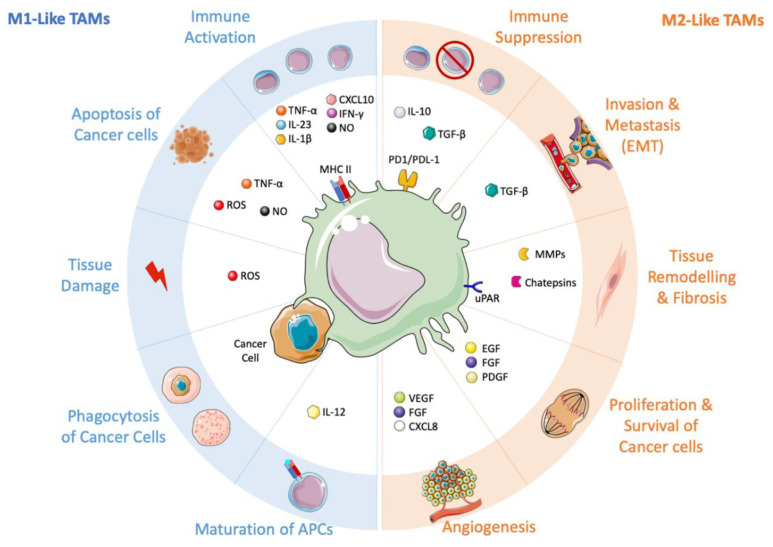Figure 1.
Tumor-associated macrophages (TAMs) and their ambivalent role in shaping the tumor microenvironment. On the left side, the anti-tumoral M1-like macrophages, stimulated by immunostimulatory cytokines (e.g., IL-1β, IL-12, IL-23, TNF-α, IFN-γ). M1-like TAMs promote the recruitment and activation of T cells by producing CXCL10, TNF-α, and other cytokines. Through the release of TNF-α, ROS (Reactive Oxign Species), and NO, they can directly kill tumor cells. M1-like macrophages induce tissue damage, maturation of APCs (Antigen Presenting Cell) and they can actively phagocytose cancer cells. On the right side, the pro-tumoral M2-like macrophages, release immuno-suppressive mediators, such as IL-10, TGF-β, IDO1/2, which support regulatory T cells. These pro-tumoral immune cells promote tumor proliferation (EGF, FGF, PDGF), angiogenesis (CXCL8, VEGF, FGF), invasion and metastasis (TGF-β), and a continuous tissue remodeling (MMPs, cathepsins, uPAR).

